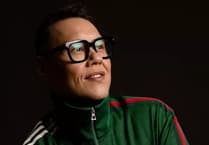Jamie Skinner reviews The Boy And The Heron, a semi-autobiographical fantasy by Hayao Miyazaki.
After the passing of his mother, 12-year-old Mahito (Soma Santoki) is whisked to a new home, where a heron (Masaki Suda) takes him to a fantastical other world, claiming that his mother his still alive.
Cert - 12, Run-time - 2 hours 4 minutes, Director - Hayao Miyazaki
With each film Hayao Miyazaki pours something deeply personal from himself into the inner-workings of his work. It could be said that with each time he comes out of retirement he finds another part of his heart and soul to infuse into the very-Ghibli worlds, creatures and food. The same can undeniably be said for his latest, The Boy And The Heron, unfolding a narrative about grief and legacy.
12-year-old Mahito (Soma Santoki) is a child well beyond his years, keeping to himself and treating any social interactions with the utmost formality he’s been whisked to an unfamiliar home after his mother is killed in a Tokyo bombing. Yet, there are occasional glimpses of the youth within Mahito, bursts of imagination in the world he knows. A simple sequence depicts the boy crafting a bow and arrow from a handful of materials around him, providing useful insight into childhood creativity before getting into the adventure proper.
The bow and arrow are being made to kill a toothy heron (an enjoyably irate and taunting voice from Masaki Suda), appearing at Mahito’s window with claims that his mother is still alive, and that he can take him to her. Thus we step into another world with sprawling layers and details. As you would expect from Ghibli there’s plenty of visual detail to get lost in within the fantastical worlds and creatures on display - including the studio’s answer to the Adipose Child - each finely animated with plenty to delve into.
However, with so much on display, and so many areas of this other world, the just over two-hour run-time has the ability to feel overlong, particularly during longer, more gradually paced, sequences. You can feel the stages of the narrative as things jump from one place to another, occasionally creating the feeling of key segments. Especially in the mid-section of the narrative things wind around without always feeling as if the film knows where it’s leading to. Yet, Miyazaki’s personal influence and feelings make for an engaging fore. Such moments allow for more depth to be brought to the more emotional beats of the narrative, even if the surroundings can sometimes feel somewhat drawn-out and winding.
As we see the hero and the heron gradually lower their external guards and personas in the face of the developing narrative Miyazaki’s most personal input on grief and childhood come through. Apparently made for the writer-director’s grandson such themes provide the strongest push of passion and connection - all through Miyazaki’s own variation of the language of cinema, which he’s used previously to communicate (it’s believed that Ponyo was made as an apology to his son). Things may occasionally feel overlong, but the personal push and detail within the themes and bright animation provide plenty to be wrapped in.
Jamie Skinner, four stars ****





Comments
This article has no comments yet. Be the first to leave a comment.